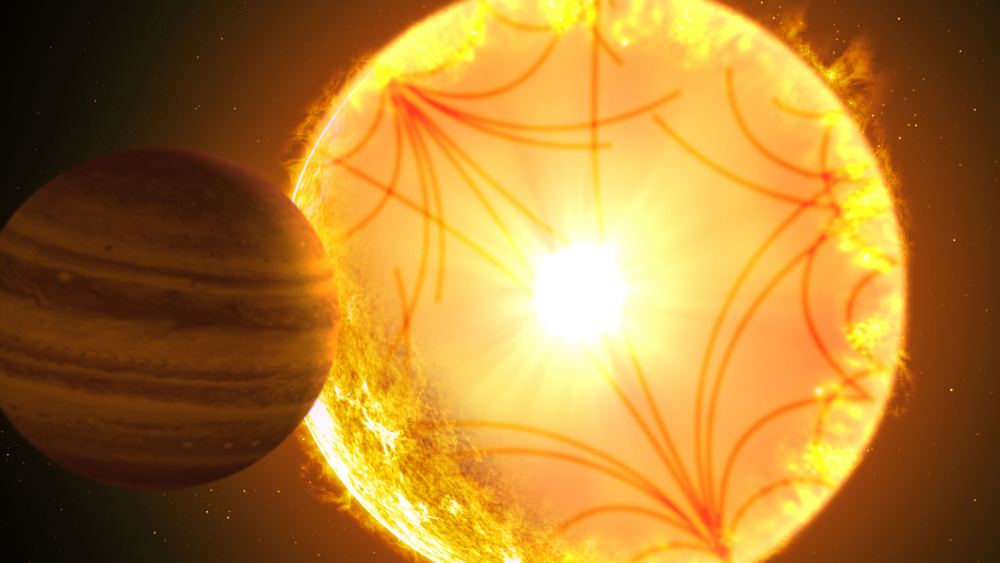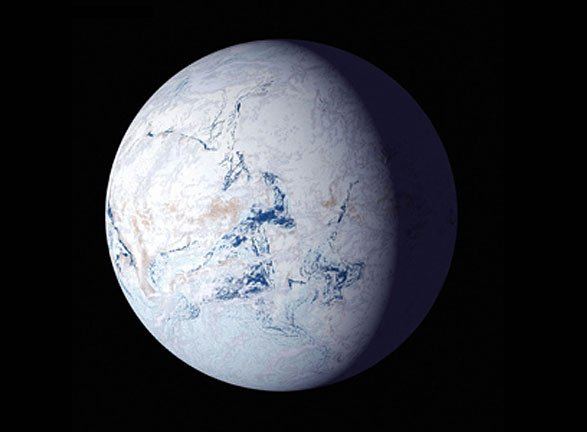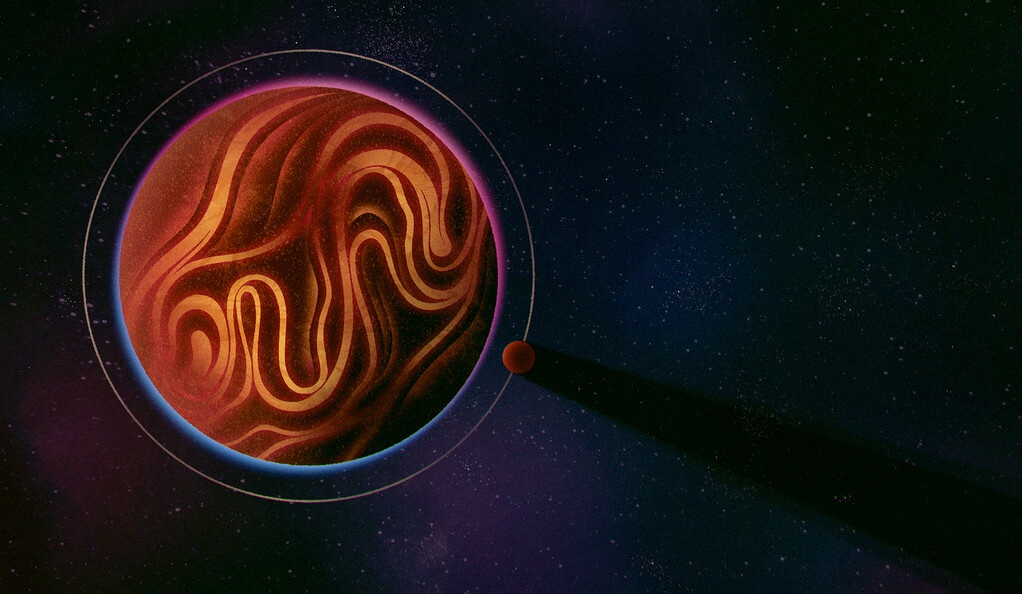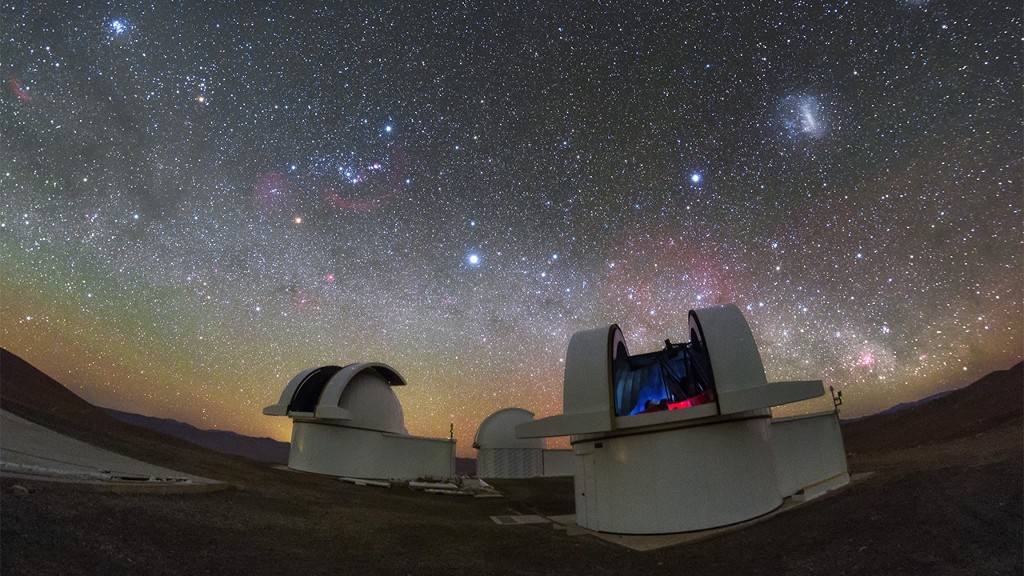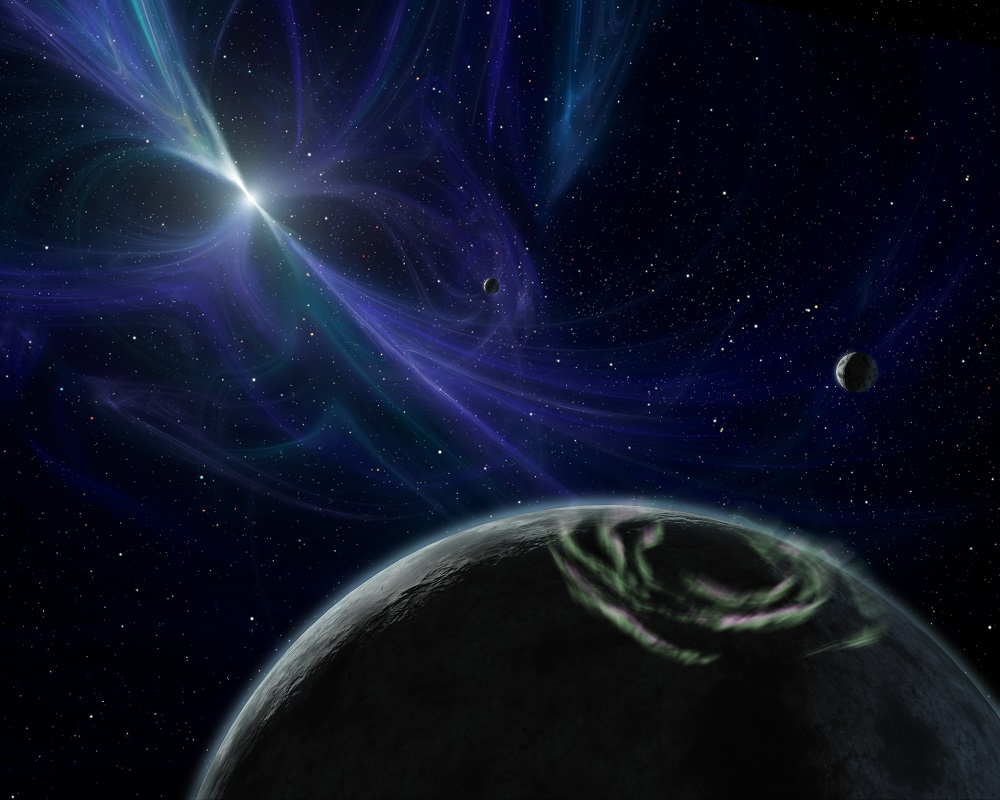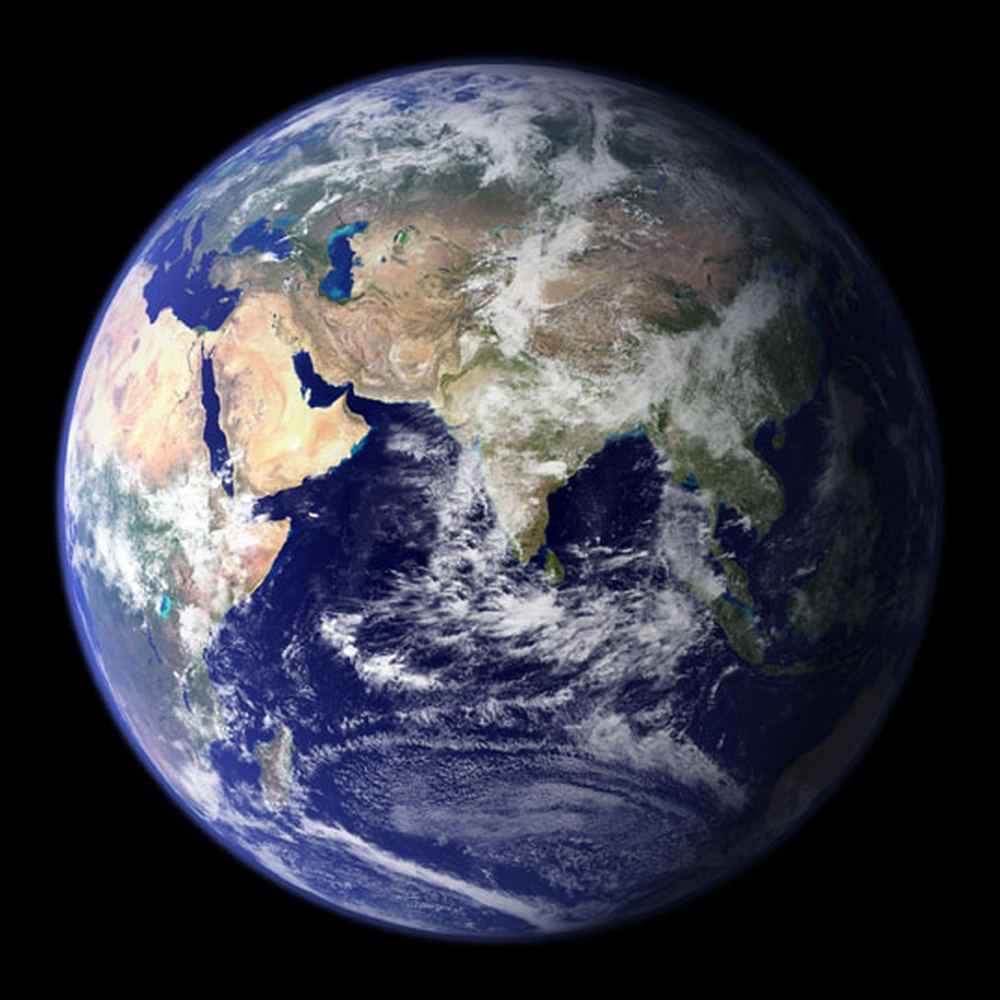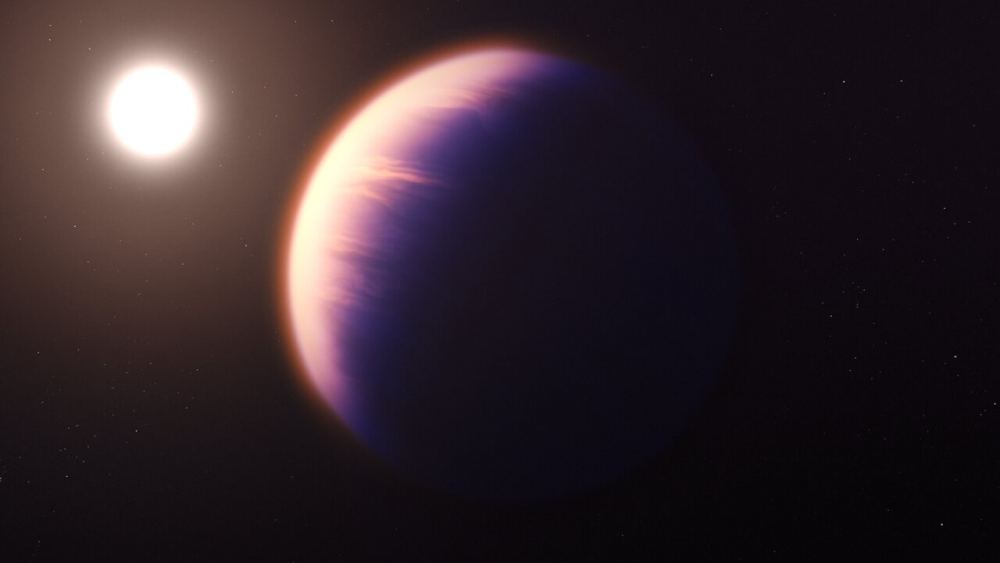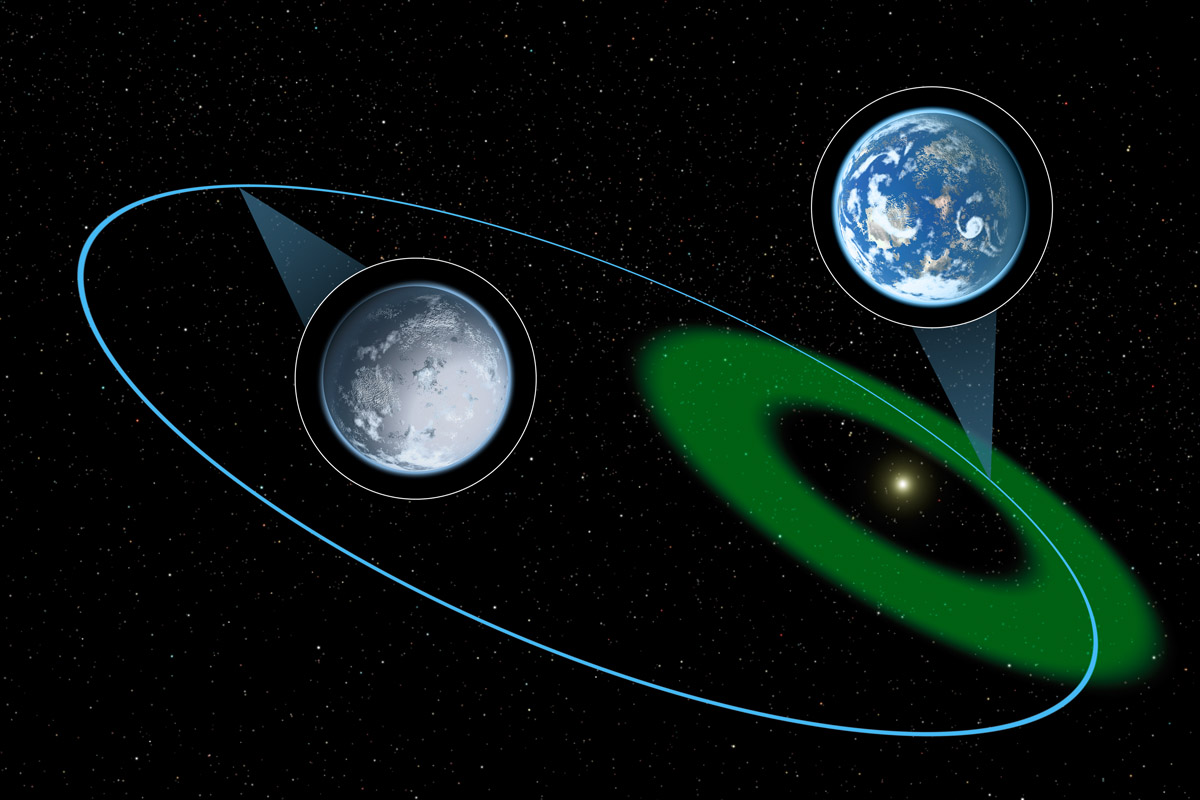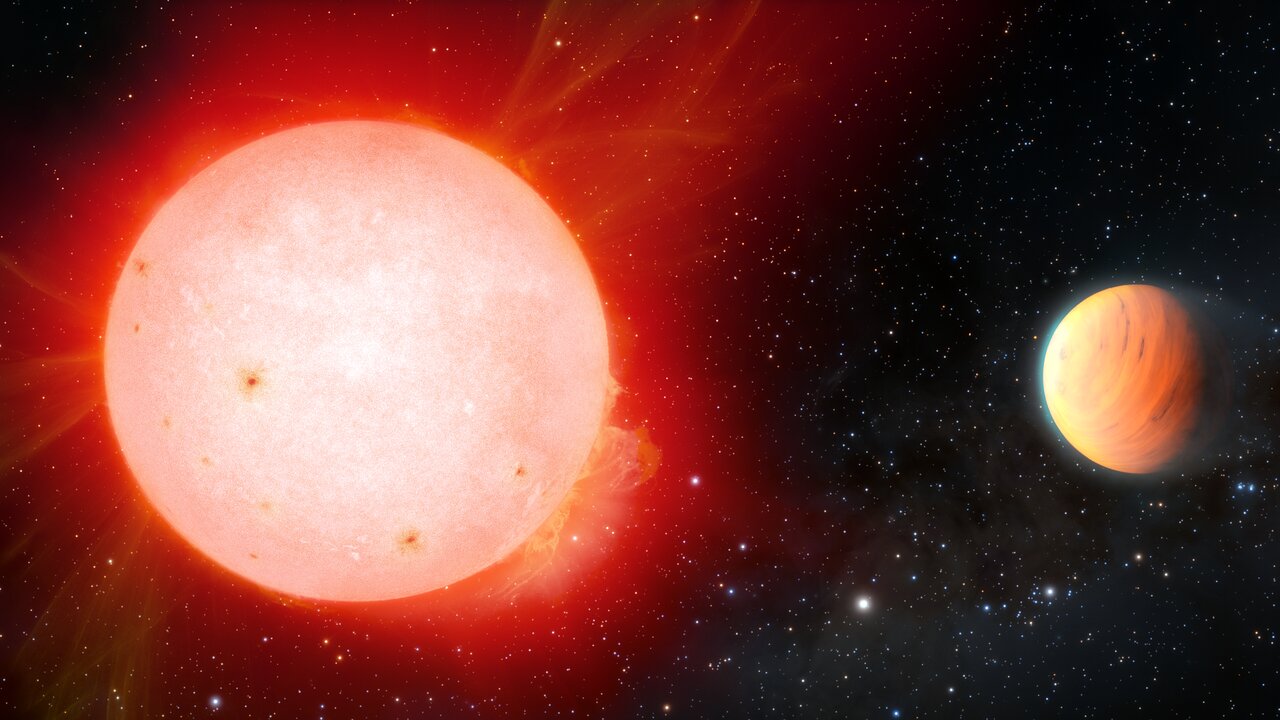“Death by star” is a fate awaiting most planets in star systems. That includes our Sun, Venus, and Mercury a few billion years from now. And, astronomers now see that same fate awaiting Kepler-1658b. It’s a hot Jupiter exoplanet orbiting an evolved F-type yellow-white dwarf star about 2600 light-years away from Earth.
Continue reading “Giant Exoplanet is Spiraling Inward to its Doom”Giant Exoplanet is Spiraling Inward to its Doom
